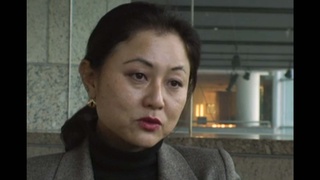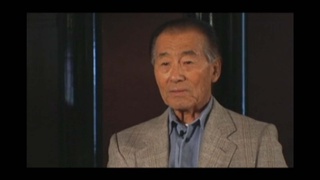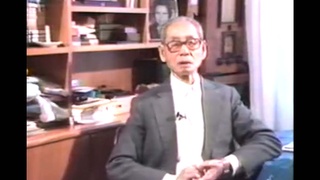Interviews
Joining the army
And because of my background, when I got drafted, of course they’d put you in the motor pool, or repairing cars and trucks. I must confess I really didn’t enjoy that. I says, “What am I doing here? I’m supposed to be in the army.” We had no military training, our jobs was simply like a civilian job. They didn’t even trust us to be on the Pacific coast. They shipped us all inland. I was in Oklahoma.
It was interesting because the local Indians would come up and run up to you and say, “Hey, hey, what tribe you from?” We were dark, suntanned like they were. And I said, “Oh we’re a southern California tribe.”
Date: January 3, 2015
Location: California, US
Interviewer: Lily Anne Y. Welty Tamai
Contributed by: Watase Media Arts Center, Japanese American National Museum
Explore More Videos

Concentration camp from a Japanese mother’s point of view (Japanese)
Shin-Issei from Gifu. Recently received U.S. citizenship

Meeting other Americans in jail
(1916-2010) draft resister, helped form the Heart Mountain Fair Play Committee

Fully aware of discrimination in America
(1919 - 2006) World War II and Korean War veteran


People with talent in the 100th infantry battalion
(1919 - 2006) World War II and Korean War veteran


442nd’s contribution to redress
(1919 - 2006) World War II and Korean War veteran


Makegumi - Movement to regognize the defeat of Japan (Japanese)
A central figure for the “Makegumi” (defeatists)

Strictly American, but sympathize with Japan
(1919-2020) Member of the 1800th Engineering Battalion. Promoted Japan-U.S. trade while working for Honda's export division.

Not able to go to Manzanar on a furlough
(1919-2020) Member of the 1800th Engineering Battalion. Promoted Japan-U.S. trade while working for Honda's export division.

Enlisting in the U.S. Army (Japanese)
(1928 - 2008) Drafted into both the Japanese Imperial Army and the U.S. Army.

Father's Service in WWII
(b. 1930) Half Japanese and grew up in both Japan and the United States.

Moving to Upland Post-Camp
(b. 1930) Half Japanese and grew up in both Japan and the United States.

Kindergarten in Davao, Philippines
(b. 1938) Philipines-born hikiagesha who later migrated to the United States.
